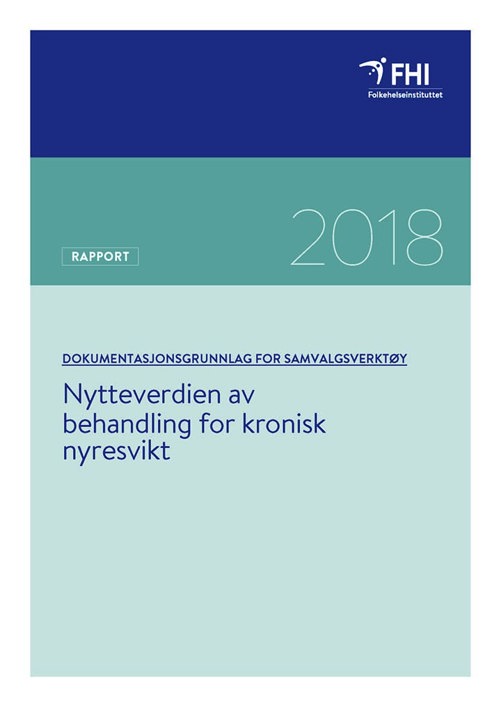Effectiveness of treatment for chronic kidney disease: evidence base for a shared decision making tool
Mapping review
|Published
My treatment options “Mine behandlingsvalg” commissioned the Norwegian Institute of Public Health to find and summarize key findings from systematic reviews about relevant treatment options to ease the symptoms in patients with chronic kidney disease.
Key message
Chronic renal failure means that the kidneys lose the ability to filter waste substances out of the blood. The kidneys consist of two organs located just below the ribs near the middle of the back, with one on each side of the spine. They form the urine by filtering the blood and removing waste materials. Chronic renal failure occurs when something goes wrong with this filtration process. When the kidneys begin to lose their filtration capacity, waste substances and fluid accumulate in the body.
My treatment options “Mine behandlingsvalg” commissioned the Norwegian Institute of Public Health to find and summarize key findings from systematic reviews about relevant treatment options to ease the symptoms in patients with chronic kidney disease.
We found three relevant systematic reviews about the effectiveness of:
- Dialysis (two reviews)
- Transplantation (one review)
We made summary of findings tables and plain language sentences to summarize the results. Bottom line for the main outcomes mortality and quality of life is:
- Transplantation probably reduces mortality and increases quality of life compared to dialysis.
- It is uncertain if one type of dialysis is superior to another because we have little confidence in the evidence.
- It is uncertain if dialysis at home is superior to dialysis at the clinic because we have little confidence in the evidence.

